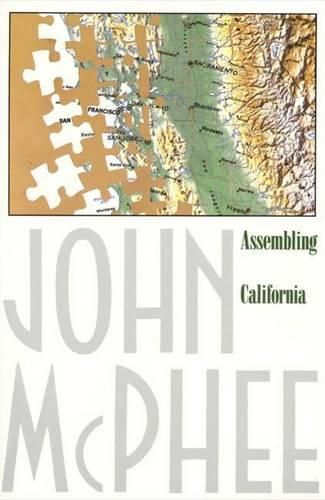Readings Newsletter
Become a Readings Member to make your shopping experience even easier.
Sign in or sign up for free!
You’re not far away from qualifying for FREE standard shipping within Australia
You’ve qualified for FREE standard shipping within Australia
The cart is loading…






At various times in a span of fifteen years, John McPhee made geological field surveys in the company of Eldridge Moores, a tectonicist at the University of California at Davis. The result of these trips is Assembling California, a cross-section in human and geologic time, from Donner Pass in the Sierra Nevada through the golden foothills of the Mother Lode and across the Great Central Valley to the wine country of the Coast Ranges, the rock of San Francisco, and the San Andreas family of faults. The two disparate time scales occasionally intersect–in the gold disruptions of the nineteenth century no less than in the earthquakes of the twentieth–and always with relevance to a newly understood geologic history in which half a dozen large and separate pieces of country are seen to have drifted in from far and near to coalesce as California. McPhee and Moores also journeyed to remote mountains of Arizona and to Cyprus and northern Greece, where rock of the deep-ocean floor has been transported into continental settings, as it has in California. Global in scope and a delight to read, Assembling California is a sweeping narrative of maps in motion, of evolving and dissolving lands.
$9.00 standard shipping within Australia
FREE standard shipping within Australia for orders over $100.00
Express & International shipping calculated at checkout
At various times in a span of fifteen years, John McPhee made geological field surveys in the company of Eldridge Moores, a tectonicist at the University of California at Davis. The result of these trips is Assembling California, a cross-section in human and geologic time, from Donner Pass in the Sierra Nevada through the golden foothills of the Mother Lode and across the Great Central Valley to the wine country of the Coast Ranges, the rock of San Francisco, and the San Andreas family of faults. The two disparate time scales occasionally intersect–in the gold disruptions of the nineteenth century no less than in the earthquakes of the twentieth–and always with relevance to a newly understood geologic history in which half a dozen large and separate pieces of country are seen to have drifted in from far and near to coalesce as California. McPhee and Moores also journeyed to remote mountains of Arizona and to Cyprus and northern Greece, where rock of the deep-ocean floor has been transported into continental settings, as it has in California. Global in scope and a delight to read, Assembling California is a sweeping narrative of maps in motion, of evolving and dissolving lands.